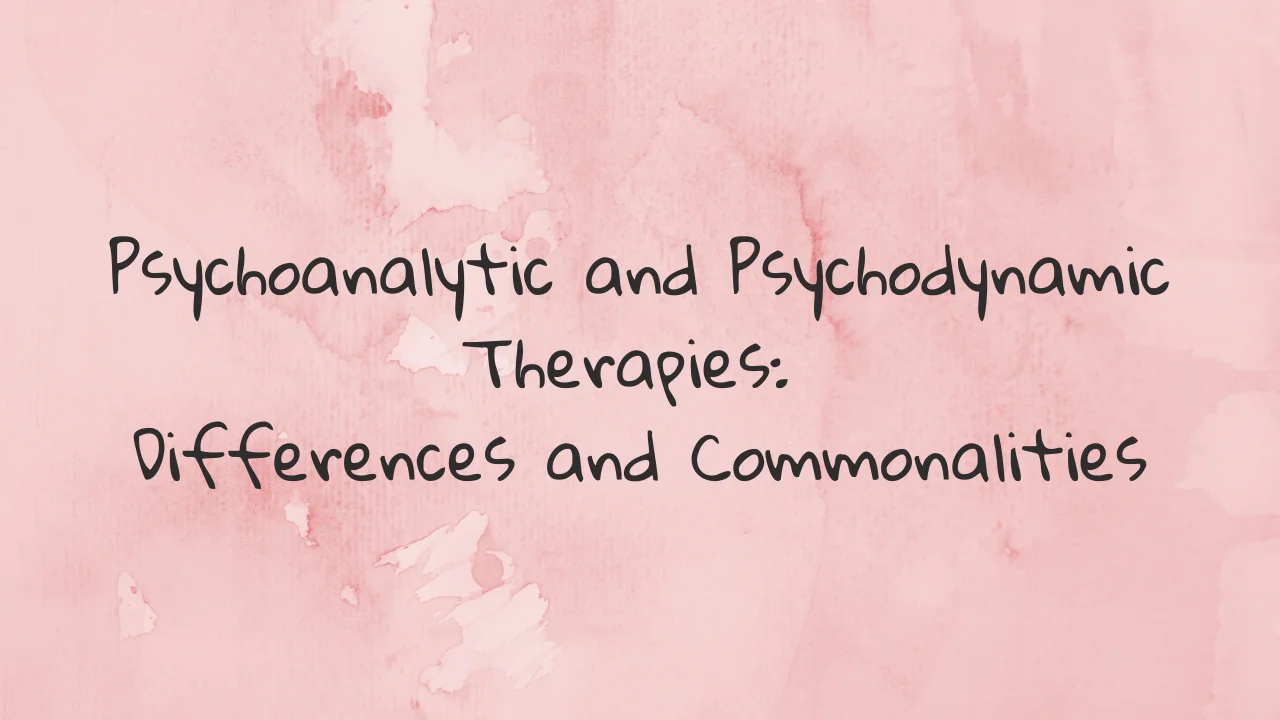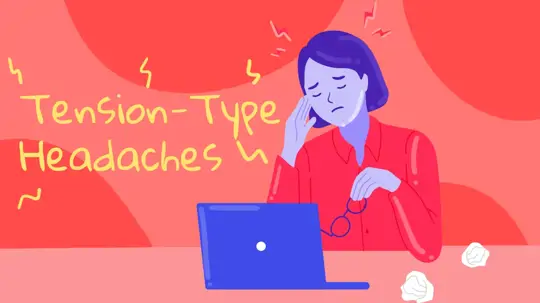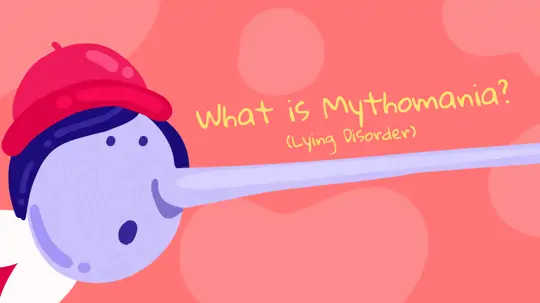
Start feeling better today!
Connect with your therapist today and take control of your life like our 850.000 happy clients.
Get StartedPsychodynamic Therapy
What is psychodynamic therapy? Psychodynamic therapy is talk therapy that focuses on unconscious processes observed in the person's current state. Rather than focusing on the person's overall behavior, psychodynamic perspective focuses on the effects of past events on the mental and emotional processes of the present. It allows the individual to reconcile their past experiences with the reasons they are experiencing today and to confront their past.
Psychodynamic therapy focuses on the effects of past events on present mental and emotional processes as opposed to general behavior. Psychodynamic therapy and psychoanalysis are often confused because they take similar approaches and employ similar methods. In general, both use experiences and unconscious processes, particularly those of childhood.
Throughout this process, it employs a variety of techniques to benefit from messages from the unconscious mind. It is especially recommended for those who want to solve problems they have been dealing with for a long time. Even though it does not require as much work as psychoanalysis, people suffering from psychosis should avoid it because it may be difficult.
This approach is effective in treating a number of disorders and psychological problems including:
- Depression
- Anxiety
- Social phobia
- Borderline personality disorder
- Post-traumatic stress disorder
- Stress-related disorders
- Physical symptoms without a biological cause
- Sexual problems
- Difficulty communicating
- Obsessions & Compulsions
- Phobias
As a result, it seeks to alleviate the symptoms of mental disorders, allowing the individual to feel better, gain insight, reclaim control of their lives, establish healthy relationships, and live a more balanced life.
The Differences Between Psychodynamic Therapy and Psychoanalysis
Because psychodynamics and psychoanalysis are related and use similar methods, they can be confused. In general, both focus on experiences and unconscious processes, particularly those of childhood. However, in order to better understand psychodynamics, we must first examine the differences with psychoanalysis.
- While psychoanalysis is entirely based on the teachings of Sigmund Freud, psychodynamics is based on the teachings of Freud as well as neo-Freudians such as Jung, Adler, and Horney.
- While psychoanalysis focuses on sexuality, psychodynamics place an emphasis on the social environment.
- Psychoanalysis is performed three to five times per week, whereas psychodynamics is performed once or twice per week. Psychoanalysis is also more time-consuming in terms of total number of sessions.
- While psychoanalysis can be intense and shocking, psychodynamics is less so.
- Traditional psychoanalysis is performed with the client lying on the chair and the psychodynamic client sitting face to face with the therapist.
- While psychoanalysis is concerned with the unconscious and dreams, psychodynamics is concerned with the human personality and mind as well.
- In addition to psychoanalysis, psychodynamics examines the effects of the outside world on the individual and current life problems.
- In psychodynamic therapy, unlike psychoanalysis, there is no detailed analysis of the unconscious.
What Can You Expect from Psychodynamic Therapy?
Assume you go see a therapist and decide to use the psychodynamic approach in collaboration with your therapist. To begin, you discuss your troubling feelings, thoughts, or behaviors with your therapist. These issues can also show up in your interactions with your therapist.
Then, beginning with your early childhood, you talk about times in your past when you were in similar situations. By doing so, you are establishing a link between your current feelings, thoughts, or behavior and what you have previously experienced.
Messages from your unconscious mind are useful when used appropriately. You recognize the source of your current issue. You become aware of the defense mechanisms you employ in your unconscious mind to deal with these problems and conflicts.By confronting your past, you are on your way to solving your current problems.
Techniques Commonly Used in Psychodynamic Therapy
1. Free Association
The expression of the first thought and image that comes to mind, as well as the emergence of unconscious feelings and thoughts
2. Rorschach Ink Test
Attempting to reach the person's unconscious perceptions through first impressions of ink stains of various colors and forms
3. Transference
Attempting to reach the unconscious mind by showing the feelings and thought patterns that were fed towards others in childhood, in the current relationship with the therapist
4. Countertransference
After the person is transferred, the therapist reacts to them in different ways based on what they went through as a child. When necessary, the therapist also seeks supervision them.
5. Interpretation of resistance
Questioning why the person isn't revealing their unconscious, doing things that will sabotage therapy or make them resistant to change, and trying to find out the underlying reasons with the client
6. Dream analysis
With the help of a therapist, a person can look at the symbols they saw in their dream, the events they went through, and the emotions they felt. This is done by using what the person thinks the objects in their dream mean. In this way, it is possible to try to get messages from the unconscious.
Duration of Psychodynamic Therapy
Short-term psychodynamic therapies can last up to 25 sessions, while long-term ones can last more than 50. When studying whether short-term or long-term psychodynamic therapies are more effective, Leichsenring and Rabung (2008) found that long-term psychodynamic therapy is more effective in terms of how well it works in general, how well it solves specific problems, and how well the person functions. Knekt et al. (2008) discovered that short-term psychodynamic therapy produced faster results, but that long-term psychodynamic therapy is more effective in the long run. Although the findings of these studies have been criticized, it is possible to state that the psychodynamic approach leads to lengthy sessions.
Types of Psychodynamic Therapy
Short-term psychodynamic therapy:The goal of solution-focused therapy, which usually lasts from a few to 24 sessions, is to lessen the effects of negative events that happen to a person.
Open dialogue therapy:A social network-based therapy model based on listening and understanding, in which friends and family are active participants, there is continuous cooperation among the participants, there is no rushed diagnosis, and the participants are tolerant of uncertainty.< /p>
Family therapy: A type of therapy that promotes healthy communication within the family.
Writing therapy: Putting one's own thoughts and feelings into writing and identifying situations that cannot be expressed verbally
Music therapy: Awareness of one's inner state with the help of music and helping to express it
Game therapy: A child's symbolic expression of feelings and thoughts through play
Is Psychodynamic Therapy Effective?
We include a comprehensive meta-analysis study here for those who are skeptical of the psychodynamic approach and say, I will not be convinced until I see scientific research.
The study, compiled by Shedler (2010) and consisting of 17 meta-analysis studies, sheds light on the subject with its vast scope.
To demonstrate the study's breadth, it consists of eight meta-analyses that included 74 studies on psychodynamic therapy alone. The study compares the effect sizes of four main groups (standard deviation of the difference between the experimental and control groups): general psychotherapy, cognitive-behavioral therapy, antidepressant intake, and psychodynamic therapy.
As a result, while minor effects/changes in antidepressant intake were observed, average and substantial effects were observed in all therapy meta-analyses. Although the comparison of therapeutic approaches varies from study to study, we find that most meta-analyses involving psychodynamic therapy are quite effective, if not robust.
Sources
- Knekt, P., Lindfors, O., Härkänen, T., Välikoski, M., Virtala, E., Laaksonen, M. A., Marttunen, M., Kaipainen, M., & Renlund, C. (2008). Randomized trial on the effectiveness of long-and short-term psychodynamic psychotherapy and solution-focused therapy on psychiatric symptoms during a 3-year follow-up. Psychological Medicine, 38(5), 689–703. https://doi.org/10.1017/S003329170700164X
- Leichsenring, F., & Rabung, S. (2008). Effectiveness of Long-term Psychodynamic. American Medical Association, 300(13), 1551–1565.
- Shedler, J. (2010). The Efficacy of Psychodynamic Psychotherapy. American Psychologist, 65(2), 98–109. https://doi.org/10.1037/a0018378





